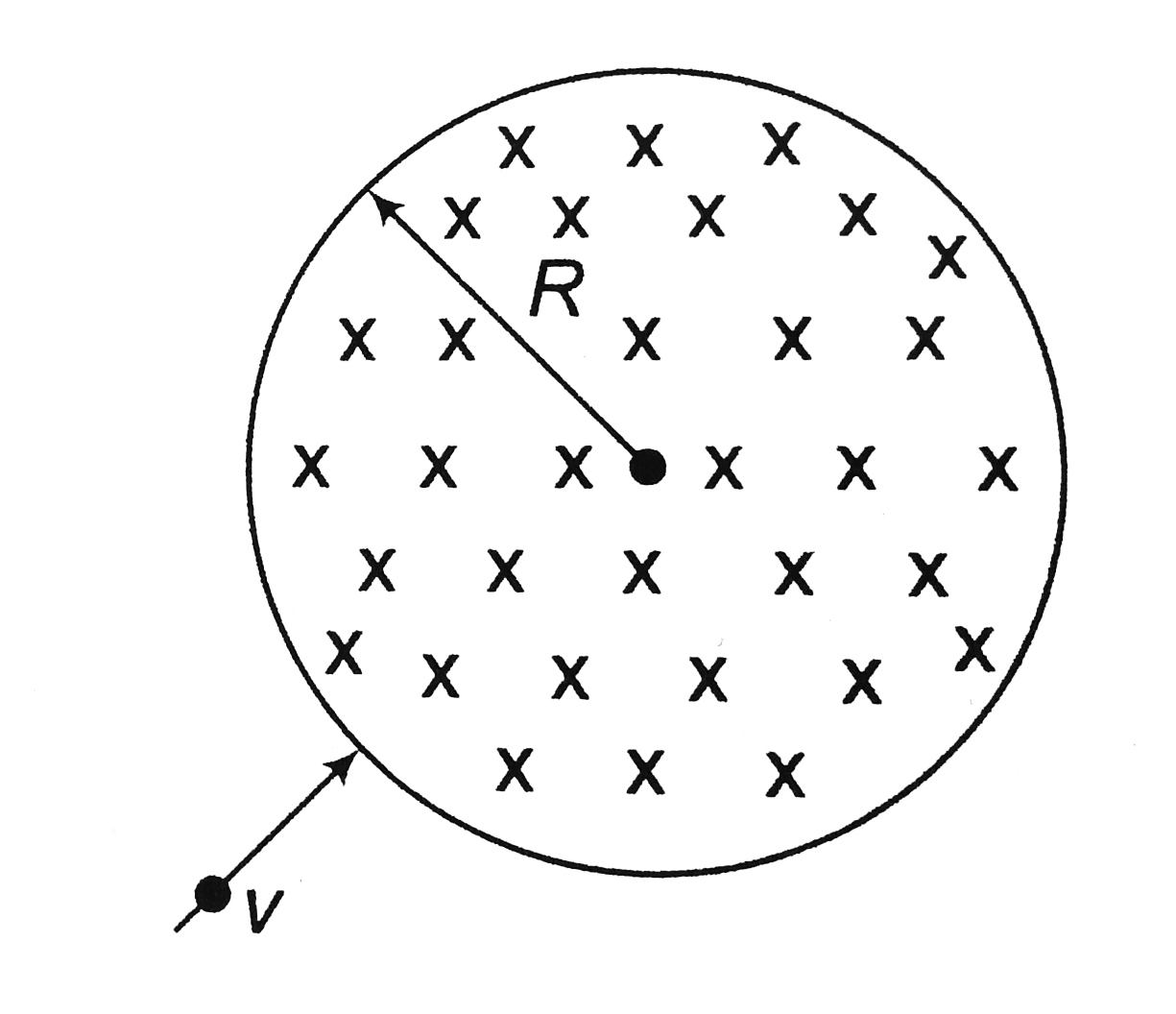A particle of mass M and charge Q moving with velocity →v describe a circular path of radius R when subjected to a uniform transverse magnetic field of induction B. The work done by the field when the particle completes one full circle is
(a)(mv2R)2πR
(b)zero
(c)BQ2πR
(d)BQv2R
The correct Answer is:B
To solve the problem, we need to analyze the motion of a charged particle in a magnetic field and determine the work done by the magnetic field when the particle completes one full circular path.
1. Understand the Forces Acting on the Particle:
The charged particle of mass M and charge Q is moving in a circular path due to the magnetic force acting on it. The magnetic force →F acting on the particle is given by the Lorentz force equation:
→F=Q(→v×→B)
where →v is the velocity of the particle and →B is the magnetic field.
2. Direction of the Force:
The magnetic force →F is always perpendicular to the velocity →v of the particle because it is a cross product. This means that the force does not do any work on the particle since work is defined as:
W=→F⋅→d
where →d is the displacement. If →F is perpendicular to →d, then W=0.
3. Complete One Full Circle:
As the particle moves in a circular path, it completes one full circle. During this motion, the magnetic force continuously changes the direction of the particle's velocity but does not change its speed. Since the force is always perpendicular to the displacement, the work done by the magnetic field over one complete revolution is:
W=0
4. Conclusion:
Therefore, the work done by the magnetic field when the particle completes one full circle is:
Work done=0
Final Answer:
The work done by the field when the particle completes one full circle is 0.
The charged particle of mass M and charge Q is moving in a circular path due to the magnetic force acting on it. The magnetic force →F acting on the particle is given by the Lorentz force equation:
→F=Q(→v×→B)
where →v is the velocity of the particle and →B is the magnetic field.
The magnetic force →F is always perpendicular to the velocity →v of the particle because it is a cross product. This means that the force does not do any work on the particle since work is defined as:
W=→F⋅→d
where →d is the displacement. If →F is perpendicular to →d, then W=0.
As the particle moves in a circular path, it completes one full circle. During this motion, the magnetic force continuously changes the direction of the particle's velocity but does not change its speed. Since the force is always perpendicular to the displacement, the work done by the magnetic field over one complete revolution is:
W=0
Therefore, the work done by the magnetic field when the particle completes one full circle is:
Work done=0
The work done by the field when the particle completes one full circle is 0.
Topper's Solved these Questions
- MAGNETIC EFFECTS OF CURRENT BOOK - VMC MODULES ENGLISHCHAPTER - MAGNETIC EFFECTS OF CURRENT EXERCISE - LEVEL 2
50 Videos
- MAGNETIC EFFECTS OF CURRENT BOOK - VMC MODULES ENGLISHCHAPTER - MAGNETIC EFFECTS OF CURRENT EXERCISE - JEE Main (Archive)
75 Videos
- MAGNETIC EFFECTS OF CURRENT BOOK - VMC MODULES ENGLISHCHAPTER - MAGNETIC EFFECTS OF CURRENT EXERCISE - LEVEL 0 (LONG ANSWER TYPE )
3 Videos
- LIQUIDSBOOK - VMC MODULES ENGLISHCHAPTER - LIQUIDSEXERCISE - JEE ADVANCED (LEVEL -2)
55 Videos
- MOCK TEST 1BOOK - VMC MODULES ENGLISHCHAPTER - MOCK TEST 1EXERCISE - PART I : PHYSICS (SECTION-2)
10 Videos
Similar Questions
An electron is moving on a circular path of radius r with speed v in a transverse magnetic field B. e/m for it will be
View SolutionA particle of mass m and charge Q moving with a velocity v enters a region on uniform field of induction B Then its path in the region is s
View SolutionThe path of a charged particle moving in a uniform steady magnetic field cannot be a
View SolutionA particle of mass m, charge q and kinetic energy T enters in a transverse uniform magnetic field of induction B. After the 3 s, the kinetic energy of the particle will be
View SolutionA charged particle of mass m is moving with a speed u in a circle of radius r. If the magnetic field induction at the centre is B, the charge on the particle is
View SolutionA charged particle of mass m and charge q travels on a circular path of radius r that is perpendicular to a magnetic field B. The time takeen by the particle to complete one revolution is
View SolutionA particle of mass m having a charge q enters into a circular region of radius R with velocity v directed towards the centre. The strength of magnetic field is B. Find the deviation in the path of the particle.

View SolutionWhen a charged particle enters a uniform magnetic field its kinetic energy
View SolutionWhen a charged particle moving with velocity →v is subjected to a magnetic field of induction →B, the force on it is non-zero. This implies that:
View SolutionA charged particle of mass m and charge q describes circular motion of radius r in a uniform magnetic field of strength B the frequency of revolution is
View Solution